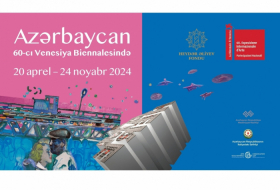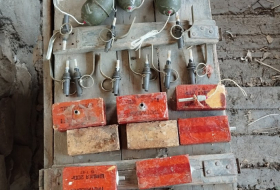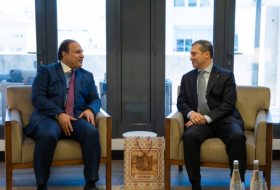The monuments were first formulated in the form of human silhouette, then horse, rams, sheep figures, brothers and sisters. According to researchers, the oldest memorial monuments are called the oldest Manhir. Menhir type stones are considered to be primitive human sculptures. The ideological foundations of Menhir and other ancient Turkic statues are the same. Each of them is based on an imaginary imagination that the human soul is immortal after death. Menhirs and stone statues are one of the oldest memorial monuments of our people.
It is possible to clarify from the researches and the obtained literature that the monumental monuments are shaped in the form of horses, rams and sheep statues after human figurines. Although it is historically present in the area, the gravestone in the form of a horseshoe is not found today. Unlike the Nakhchivan region, Kalbajar, Lachin, Gazakh, Ganja and others. A large number of horse statues placed on the graves were recorded in their territory.The findings of Academician R. Efendi on his findings have been provided with photos.
Unlike gravestones in the form of horse statues, a large number of rug and burial statues are found in Nakhchivan Autonomous Republic. These types of grave stones can be found in almost all regions inhabited by Turks. Türki, South Azerbaijan, Georgia (living in Azerbaijanis), Irevan district of historical Azerbaijan, etc. There are gravestones in this region. Armenians have historically written these monuments of Iravan city and other places in Western Azerbaijan as their own. However, they should not forget that these lands are historically the Turkish territory of Azerbaijan.
The laying of a horse on stone from the ancient Turks can be explained in many ways. Thus, the horse, regarded as one of the earliest animals ever since ancient times, always symbolizes the honor, heroism and victory of our people. While weakness was an expression of weakness. At the same time, the ancient Turks saw a patriarchal symbol of patriotism and considered it a loyal servant both in this world and in the Hereafter. Horse paintings on grave stones are often found in addition to horse figures. These drawings are saddled, slippery, fully fitted.
Ancient times had given preference to the burials of their loved ones on the burial places of their ancestors, but later they continued with the customary patterns of rabbit figures.
According to the sources, putting ram and sheep-shaped monuments on the graves was related to the economic life of the tribal tribes. For this reason, Islam has never hindered such annihilation in the recent Middle Ages. The norms of horse, rhinoceros, and sheep-shaped gravestones in the Middle Ages have been resumed in Azerbaijan, including other Turkic-speaking peoples. It is known from the collected materials that horse and rams are considered sacred in the religious outlook of all Turkic peoples, including Azerbaijanis. Numerous illustrations and articles on this type of tombstones, prepared in various forms, were also promoted.
Our observations and literature show that there is great confidence among these figures. The traces of such beliefs are also found in archaeological excavations. A sheep made of clay was found in a grave in Muncuqutepe Neighborhood, studied in the Ordubad district. Clay fauna of the Erkand Bronze Age in Nakhchivan was found in I Kultepe and I Maxta. In the Bronze Age, the ram symbol is also found not only in clay figures, but also in patterns and stone zoosphorous figures, and on fire engines. These faults show that in the Bronze Age era, the belief in the ram is a special place in the ideological outlook of people. It is no coincidence that the perpetrator of domestic animals in the territory of Azerbaijan during the Bronze Age is well-known. It is also possible to connect the coach figures with the symbol of brave, courageous, brave. In addition, one of the main reasons for the sheep's holidays is its position in the farm. However, sheep are also considered to be sacrificial animals. It is known that the custom of sacrifice was widely spread among Azerbaijan and other Turkic tribes. There are also faces of sheep, sheep, and ram, buried in a sepulcher. According to sources, many tribes have sanctified some of the animals that play an important role in their lives, accept the totem, and put their monumental sculpture on the gravestones. In ancient times, the tribes took refuge in the protection of the various animals they considered sacred, whenever they are in distress, they seek the salvation of them. Most of the animal images are composed of paintings of such sacred totems.
This type of statue has been banned after the Islamic religion has emerged. As Laikin settled down, people began to respect the Islamic tradition with great respect, and they began to create works of art that had their historical past.
As it is known, there is such an unwritten law in history, that any subsequent culture cannot be overturned in the minds of the people, destroying the tradition of living with minions. By contrast, the successes gained from the previous cultural heritage are combined and lead to the formation of a larger culture. It is precisely because of such regularities that it continued from the earliest times and later in the times it was said that the usual burial of the grave stones, which was banned in line with the requirements of the times, was revived and spread to large areas. The grave rhinoceros associated with the ancient Turkic heritages, and the statue of the statues of the sheep, have gained even greater scales during the Garaqoyunlu and Aggoyunlu states. In Anatolia, it is customary to place the monuments of the grave and sheep statues, mainly the Garagoyunlu and Aggoyunlu monuments. Laikin is one of the issues that draws attention to the fact that the custom of laying sheep and horse graves was continued in Anatolia and in the Caucasus after the Garagoyunlu and Aghgoyunlu states. Samples and continued until the last Middle Ages, and covered a vast area. Laikin's grave stance on the rebuilding of these monuments, led by many Islamic scholars, has led to the formation of an attitude towards monuments. From this point of view, memorial monuments in some periods of history have not always been accepted as meaningful. It is possible that people who are closer to Islamic scholars' interpretations and those who follow the laws of Sharia have a negative attitude toward the correction of these monuments and there have been some neglects against monuments as a logical continuation of these relations. The disgusting Armenian nationalists, who skillfully exploited such a cold attitude, tried to instigate them .Who have stolen ram and sheep sculptures, which are beautiful examples of our historical and cultural monuments, have been able to take or transmit the territory of Armenia to the territory of Armenia, where they have managed to spread such an idea among the people, hiding in the graves of the grave. This led to the destruction of a number of grave stones by some people. Because our historical monuments, which are of great importance to our cultural monuments, are based on a great deal of research on the writings and artistic inscriptions, to the false Armenian scholars that these monuments do not belong to them. Ancient rock paintings, medieval memorial monuments, as well as overcrowded books and drawings, have been explored and the claim that cunning Armenian scholars will not adopt our lands and cultural monuments.
Armenian scholars try to convince the world community that there are 27-30 thousand Armenian monuments in Nakhchivan at the beginning of the 20th century and claim that most of these monuments are graveyard memorial monuments. It is therefore essential that the historical and cultural monuments of Nakhchivan, including the graveyard memorial monuments (siblings, surnames, stone ram figures etc.), are very important to be read and transmitted to the public.
It should be noted that graveyard memorial monuments are painted with different inscriptions on them, and it is a seal on the soil of every nation. These monuments are a source of irrefutable evidence that the territory where they live, as distinct and objective sources of history and culture, belongs to the people, namely the Azerbaijani Turks. Therefore, in the Middle of the last century, Armenians violated the medieval graveyard memorial monuments in our region, especially the stones and sheep figures, and brought them to Armenia and distorted the inscriptions and images belonging to the Azerbaijani Turks before demonstrating them to the streets and squares of the cities. Instead, they inscribed their own inscriptions and drawings. A number of steps have already been taken at this state level in this area. During the collection, no monuments of Armenian descent were found in the Autonomous Republic. Our employees at that time were also interested in toponims of the region and did not come across any Armenian origin. The importance of scientific research works and scientific publications published to prove the groundlessness of Armenian claims is very important.
To prevent and expose the fraudulent intentions of the Armenians, all the monuments in our territory, including the monumental memorial monuments, the comprehensive, thorough and objective investigation of the various monuments of the past, proof that they have nothing to do with the Armenians and bring them to the international community are a necessity Has become. Consequently, it is possible to note that the installation of animal monuments in the monumental monuments and the processing of some of the animal images on these monuments have long been a tradition belonging to the Turks. After the adoption of the Islamic religion, the Turks did not forget about some examples of animal species that played an important role in the economic and social life of mythological thinking, and continued to do so in their artistic works, including the monumental monuments. The claim of Armenians to abolish these monuments is nothing but empty nonsense.
Sara Hajiyeva is a Ph.D. in History, Associate Professor
Nakhchivan Branch of ANAS
More about:
















































